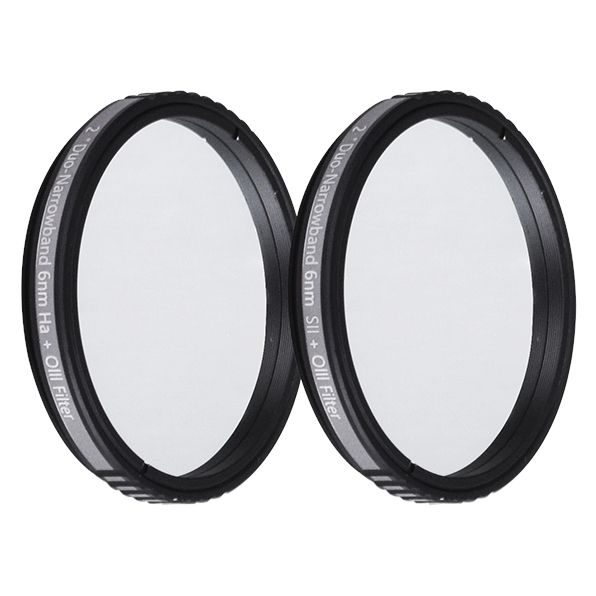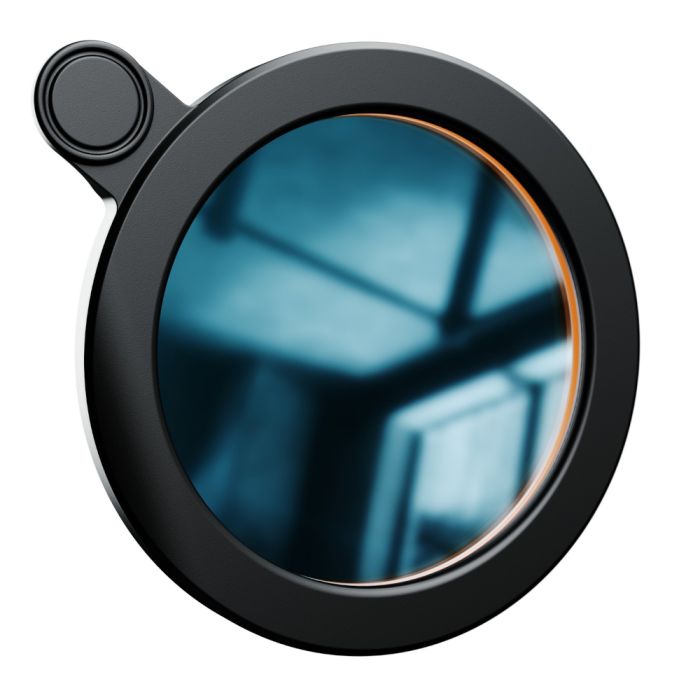
Filters increase the viewability of faint celestial objects and shield the observer, and their equipment filters for the sun, deep-sky, and solar eclipse control light transmission for safe astronomy viewing. Sun filters cut intense sun radiation. Filters for the deep sky help to enhance the contrast between galaxies and dark nebulae. Have you enjoyed having the opportunity to educate others about solar eclipses? Light is reduced by filters designed for solar eclipses, allowing for safer direct viewing. It is essential to acquire additional knowledge regarding solar eclipse filters.
Highlighted Products
Featured Product 1
The Askar Color Magic Super Duo Narrowband Filters present an unusual method for acquiring SHO data from one-shot color cameras. The Super D series lets users record exact images in the SHO palette by capturing Ha/OIII and SII/OIII. Separating the two wavelengths of any filter allows one to build a complete SHO image, minimizing the need for several filters and combining the camera's features
Featured Product 2
By strengthening contrast and illuminating heavenly splendor, the Vespera Dual Band Filter optimizes astrophotography. It generally improves star sharpening, contrast, and night sky photography, especially when working with nebulae. This filter alters your field of vision and was custom-made for the Vaonis Vespera intelligent telescope.
Featured Product 3
Ideally, for the deep sky viewing, Astronomik UHC filters practically all H-beta and O-III emission lines pass through. They go quite nicely with larger telescopes and focal ratios between f/4 and f/15. These filters are excellent with telescopes with f/4 to f/15 shine, especially with more significant instruments and 5 inches or higher apertures.
More About This Category
The Importance of Deep Sky Filters in the Age of Light Pollution
As urban areas continue to spread, the splendor of the night sky faces growing risks due to luminous contamination. This marvel, brought on by surplus fabricated lighting, washes out the pale celestial bodies that once astounded our forebears. This introduces a noteworthy impediment, mainly for amateur astronomers and astrophotographers. However, cutting-edge deep sky filters have developed as indispensable aids to battling this predicament, allowing devotees to savor and chronicle the mysteries of the cosmos despite the illuminated obstacles erected around us.
Understanding Light Pollution
Light pollution spreads as artificial illuminations brighten the night, masking our glimpse of celestial stars and planets. This disproportionately happens in urban centers, where streetlamps, structures, and signage emanate a luminance that can submerge the delicate sparkle of far-off galaxies and misty luminous clouds. Consequently, numerous amateur astronomers often discover it is taxing to carefully watch or image profound-sky entities, bringing exasperation and disenchantment. Street lamps, skyscraper windows, and digital billboards all contribute to the unnatural glow that washes out our view of the cosmos. While light pollution helps us see our way after dark, it also obscures our ability to explore the universe overhead. Though disheartening for astronomy enthusiasts, the neon night skies are an inevitable byproduct of modern urban living.
What Are Deep Sky Filters?
Deep sky filters are specially designed optical filters that help reduce the effects of light pollution. They selectively block specific wavelengths of light emitted by artificial sources while transmitting the spectrum of natural celestial emissions. Such filters sharpen contrast and enhance subtleties, facilitating observation and documentation of attenuated astronomical phenomena, including far-flung nebulae and distant galaxies whose weak light is otherwise overwhelmed. Alternative illumination obscures the brilliant yet subtle splendors of the cosmic dark. Still, dedicated filters illuminate the obscure by selectively shedding urban gleams to showcase the neglected radiances lurking beyond blaring artificialities.
Types of Deep Sky Filters
General-purpose filters can heighten the overall visibility of deep-sky objects, while narrowband filters concentrate on specific wavelengths to isolate particular emissions from celestial bodies.

For instance, Celestron's Oxygen III (OIII) Narrowband 1.25" Filter is an excellent choice for those seeking to expose intricate details in planetary nebulae and supernova remnants. This rather specialized filter obstructs a wide range of wavelengths from 400 to 700 nm, offering the extreme contrast necessary to uncover hidden features that other filters may overlook. You can use a low-power eyepiece with a minimum exit pupil of 5 to 7mm to maximise its efficacy.

For serious astro-shooters, Optolong’s 2" Filter Set provides an expansive solution. Filters are tuned to hydrogen-alpha, sulfur-two, and oxygen-three emissions emanating from celestial wonders. Constructed from scratch-proof, durable Schott glass using sophisticated ion deposition, each filter isolates sought-after wavelengths. Astrophotographers employing this diverse trio extract previously obscured intricacies. Lengthier exposures showcase nebulae in nuanced hues, their wispy tendrils emerging with heightened color and clarity. Where a lone filter reveals only part of an object's nature, this set's targeted trio permits capturing phenomena in their full cosmological tapestry. Armed with Optolong's versatile assortment, dedicated astrophotographers record magnificent scenes that more straightforward solutions fail to resolve fully, unveiling celestial marvels in unprecedented depth and distinction.
Benefits of Using Deep Sky Filters
Enhanced Contrast: By filtering out unwanted light pollution, deep sky filters significantly improve the contrast of celestial objects against the night sky. This allows for better visibility of faint details that would otherwise be lost.
Improved Image Quality: Deep sky filters can lead to sharper, more vibrant images for astrophotographers. The ability to isolate specific wavelengths means that the resulting photographs can capture astronomical objects' colors and features.
Greater Accessibility: Deep sky filters allow amateur astronomers to observe and photograph deep-sky objects even in light-polluted areas. This allows more enthusiasts to engage with the night sky, regardless of location.
Versatility: Many deep sky filters are designed to be used with various telescopes and cameras, making them versatile tools for visual observation and astrophotography. This adaptability ensures that users can maximize their equipment's potential.
As light pollution increasingly threatens to overwhelm our view of the stars, deep sky filters have proven vital accessories for casual observers and dedicated astrophotographers seeking to peer past nearby streetlamps into the grandeur of the heavens. Filtering out artificially created luminance restores the night's rightful darkness, unveiling breathtaking celestial spectacles in vivid clarity. Whether a novice venturing to document their first unfolding nebula or a seasoned veteran pursuing ever more precise depictions of our planetary neighbors, embracing the advantages of carefully selected deep sky filtration guarantees amplifying the awe of astronomical observation and exponentially improving resulting photographs, unlocking glimpses of the intricate tapestry above unknown to unaided eyes below.
With the right equipment and techniques, you can overcome the challenges of light pollution and share breathtaking astrophotos that reflect the universe's wonders. So, gear up, grab your deep sky filters, and prepare to explore the celestial treasures waiting to be discovered!


